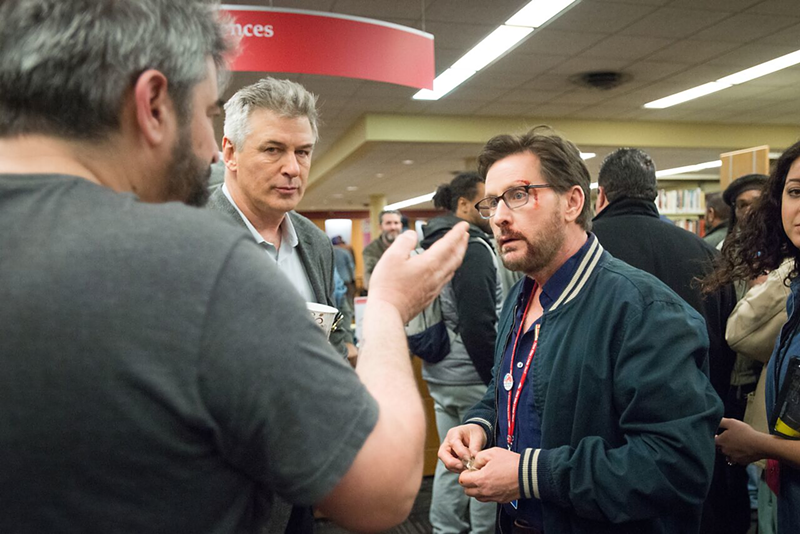Emilio Estevez’s The Public, the new movie shot at Cincinnati’s Main Library about a homeless occupation of the building during a brutal cold wave, has gotten an early sensitive review from an important source — the Public Library Association, a division of the American Library Association. While the writer finds some elements problematic, he hails the film for sensitively portraying librarians.
“At its heart, however, the movie shows librarians compassionately serving the needs of all their patrons, homeless and otherwise," writes Brendan Dowling. "The library is portrayed as a civic institution pulled in many directions that ultimately endures due to the perseverance of its employees. In a pop culture landscape where their profession is all too often reduced to a caricature, librarians may take comfort in The Public’s attempt to show a more nuanced portrayal of their world.”
The film had its premiere on Jan. 31 as the opening-night presentation of the Santa Barbara International Film Festival. This is one of the first reviews and appears on the Public Libraries Online website, a companion to the association’s magazine Public Libraries. Dowling is la Los Angeles-based freelancer and former Public Libraries assistant editor.
His review begins by calling The Public an “earnest film about an eventful two days in the life of a public librarian.” He then says, “the film centers around Stuart Goodson (Estevez), a city librarian whose pragmatic and equitable approach to his job is seen from the film’s beginning. He diffuses a dispute involving a mentally ill patron with the same patience that he uses to mentor a colleague through a career transition. In these early scenes, Estevez captures the day-to-day actions in a library with an almost documentary-like quality. We see librarians interact with an array of patrons in a variety of ways, and a montage of absurd reference questions serves as a way to illustrate the breadth of services librarians offer as well as provide some comic relief.”
According to the review, Goodson comes to support the homeless but struggles to control events and guarantee a safe outcome. Dowling finds some of the plot elements more successful than others. “Estevez packs the movie with meaty topics, including homelessness, mental illness, the opioid crisis, and politics, with mixed results,” he writes.
The review also concludes with information to help librarians provide aid to the homeless:
“According to the U.S. Department of Housing and Urban Development’s 2016 Annual Homeless Assessment Report (AHAR), on a single night in January 2016, 549,928 people were experiencing homelessness in the United States. This population includes men, women, children, and families. They face a wide range of challenges including lack of affordable housing, employment opportunities, healthcare, and other needed services. As many public librarians know, with no safety net to speak of, homeless citizens often turn to the library for help. We’ve started (a) list of resources and related reading as a way to help libraries provide the best possible service to this group. We welcome your input!”
Its website says the PLA’s “core purpose is to strengthen public libraries and their contribution to the communities they serve. Its mission is to enhance the development and effectiveness of public library staff and public library services.”
The full movie review is available here.


